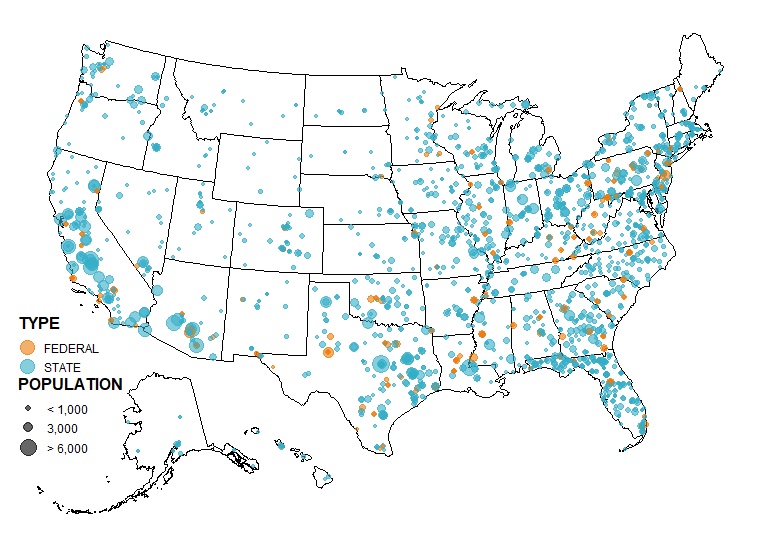
A map showing the locations of prison populations across the U.S. (Photo courtesy CSU Geospatial Centroid)
Researchers at Colorado State University’s Geospatial Centroid and the Department of Anthropology and Geography will spend the next year mapping the environmental injustices that occur at hundreds of prisons across the United States.
“This is a relatively understudied field of research, and we’re hoping that what we learn can create real change for vulnerable populations,” said Caitlin Mothes, a research and program coordinator for the Geospatial Centroid.
The research is funded by a $100,000 Equity and Environmental Justice Grant from NASA. Mothes is the principal investigator on the project, and will work alongside CSU Geospatial Centroid Technical Manager Dan Carver and Assistant Professor of Geography Carrie Channault to use the agency’s geospatial data to build a publicly -accessible map showing the environmental risk level presented by the locations of the more than 1,800 prisons in the country.
In some of these prisons, summer heat waves can create indoor heat indexes of more than 150 degrees. Others experience poor air quality due to nearby wildfires, and potential contamination due to environmental risks like nearby landfills.
Mothes will develop three component scores to characterize the environmental characteristics of each prison: climate risk, environmental exposures and environmental effects. She will then use those numbers to calculate a single environmental vulnerability index, which will be shown on the map.
These numbers encapsulate everything from heat index to wildfire risk to proximity to superfund sites.
“This work will give us a greater understanding of the environmental injustices faced by incarcerated people who are living and working in U.S. prisons every day,” Chennault said.
Chennault is the co-director of the CSU Prison Agriculture Lab. She hopes that this research will expand knowledge about outdoor prison labor, including in prison farms and gardens.
The results will be available next fall.
For more information on the Geospatial Centroid, visit: https://gis.colostate.edu/